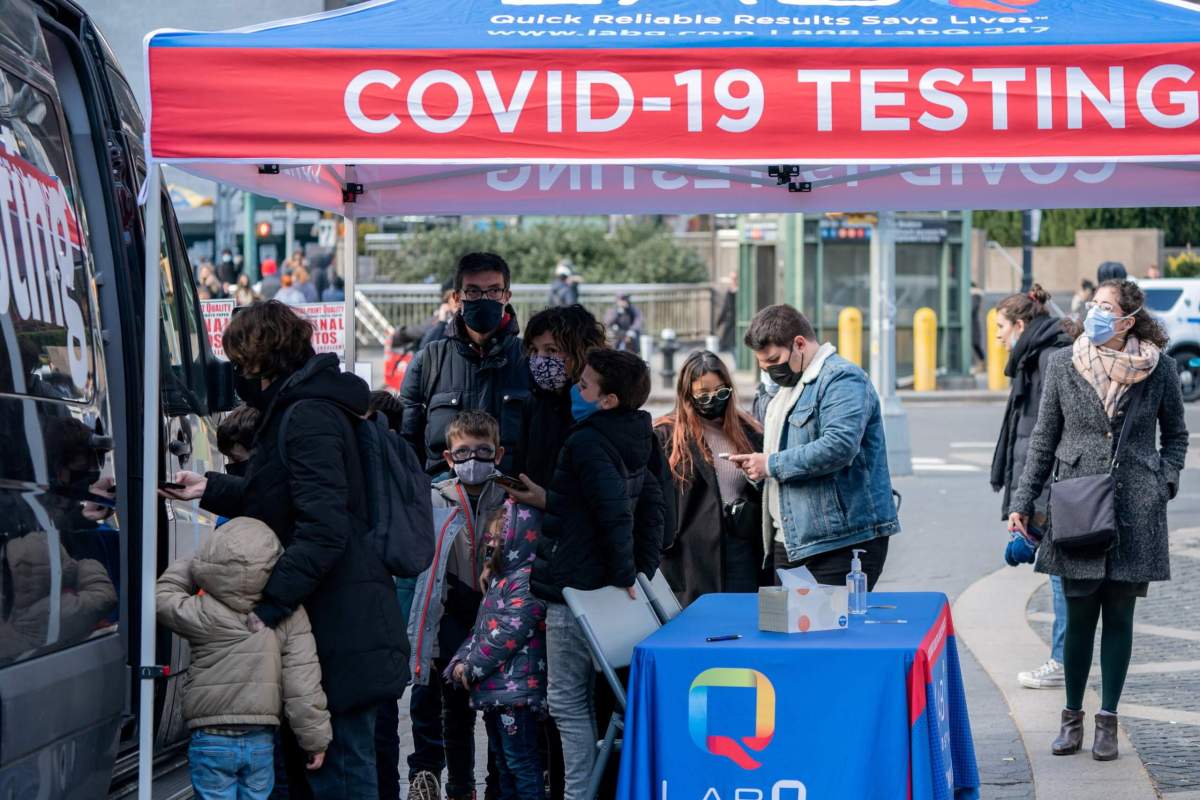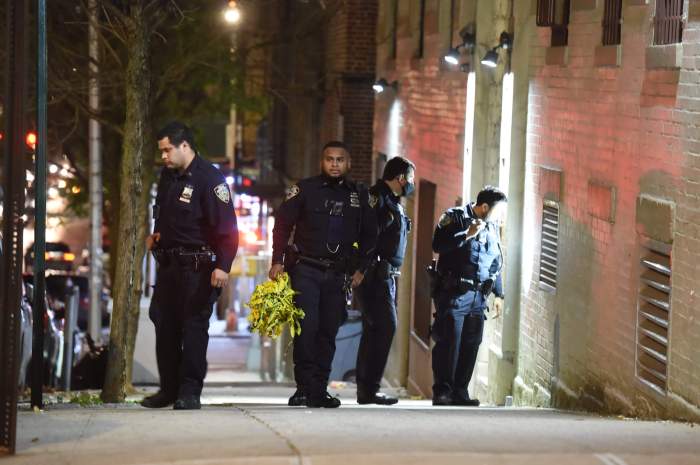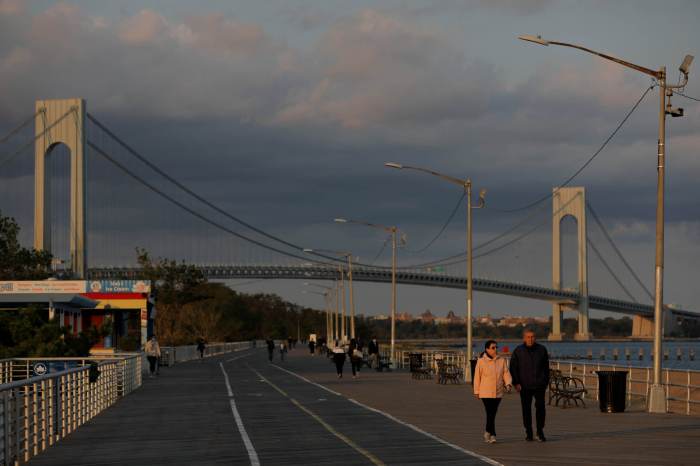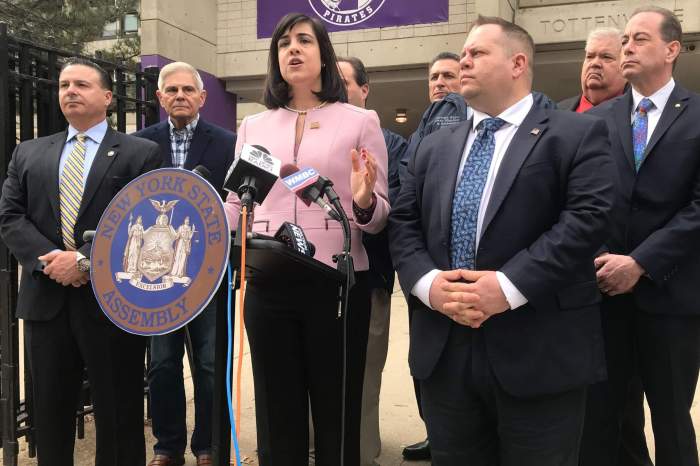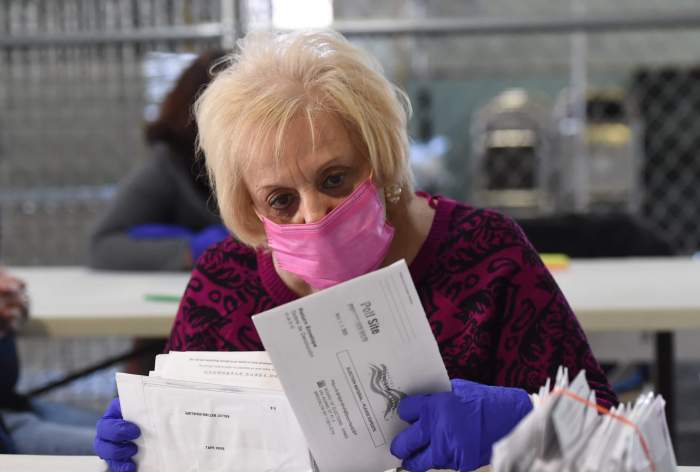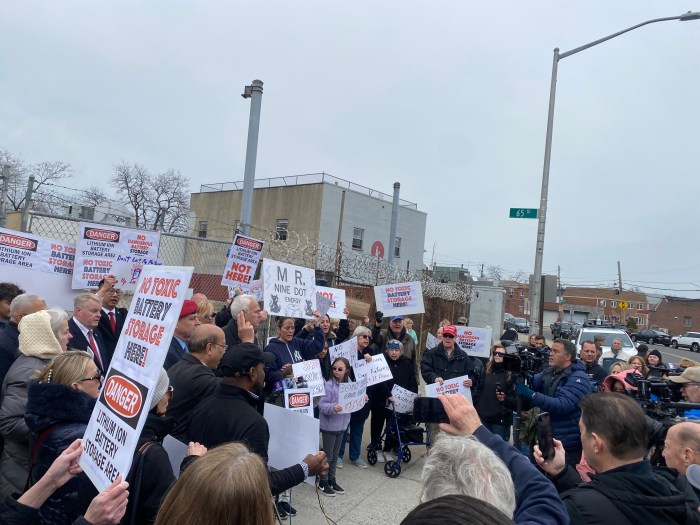While all the COVID-19 talk of late has been on the emerging Omicron variant, the Delta version of the virus continues to drive up infection rates across New York City.
More than 98% of all recently-tested COVID-19 positive cases involve the highly-infectious Delta variant, which has been the predominant strain of COVID-19 in the Five Boroughs for months now, according to the city’s Department of Health and Mental Hygiene. With weather getting colder and more activities moving inside, COVID-19 infections are going back up citywide — especially on Staten Island, where cases are skyrocketing yet again.
The borough’s transmission rate, which tracks the level of community spread, is a tell-tale sign of trouble, at 235.22 new cases per 100,000 residents. That’s more than 100 points higher than the citywide transmission rate of 133.38 per 100,000 people.
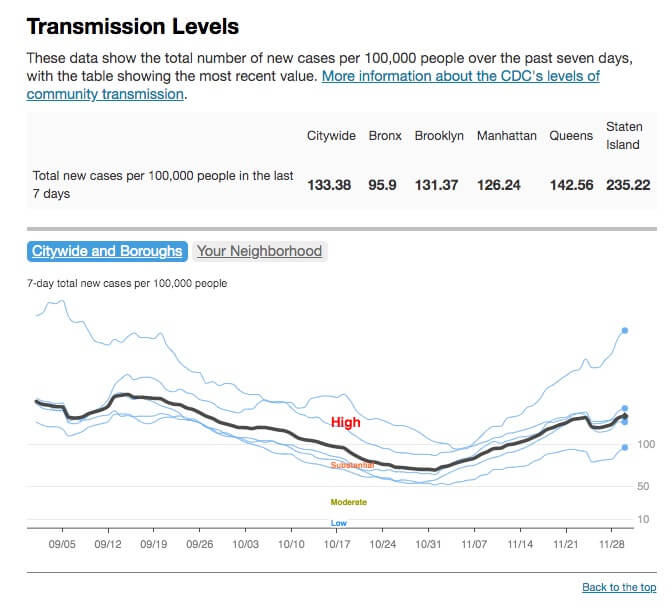
In its latest data, the city’s Health Department reported that 17 neighborhoods across the Five Boroughs had 7-day positivity rates of 5% or higher between Nov. 24-30. Three communities saw rates above 7%, two of which are on Staten Island: Tottenville (ZIP 10307, 7.91% positivity, 40 new cases) and Charleston/Prince’s Bay/Woodrow (10309, 7.48% positivity, 113 new cases).
Kew Gardens, Queens (ZIP 11415) had the third-highest positivity rate during the period, at 7.05%, with 37 new infections reported.
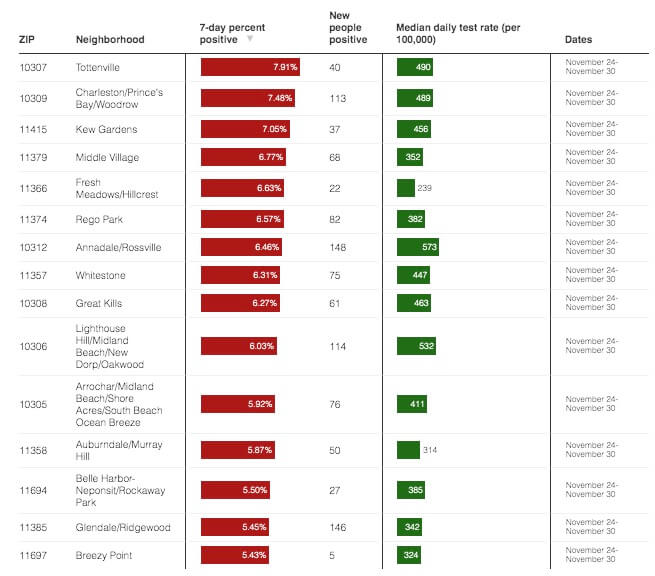
Annadale/Rossville, in the southwestern part of Staten Island (10312), had the seventh-highest 7-day positivity rate between Nov. 24-30, at 6.46%. But the area led the entire city in new COVID-19 infections during the period, at 148. That’s up from the 119 COVID-19 cases reported between Nov. 16-23.
Glendale/Ridgewood, Queens (11385) had the second-most new COVID-19 cases between Nov. 24-30 with 146, followed by East Williamsburg/Williamsburg, Brooklyn (11211) with 138. Seven other New York City communities had 100 or more new infections during the period, three of which are on Staten Island: Bloomfield/Fresh Kills Park (10314, 124 cases), Midland Beach/New Dorp/Oakwood (10306, 114 cases); and Charleston/Prince’s Bay/Woodrow (10309, 113 cases).
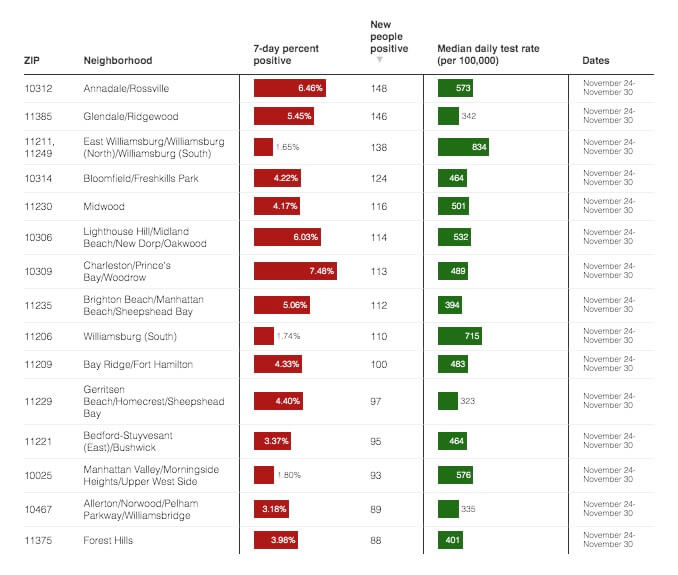
What do the 10 communities with 100 or more new COVID-19 cases between Nov. 24-30 have in common? All but two of them have vaccination rates below the citywide percentages.
Midwood, Brooklyn (11230), which had the fifth-most new cases during the period (116) had a 58% first-dose rate and a 53% fully vaccinated rate as of 9:30 a.m. Dec. 5. By contrast, the Health Department reports that 77% of all New Yorkers got at least their first dose of the vaccine, and 70% of all New Yorkers are now fully vaccinated.
Two other Brooklyn areas among the top 10 in new COVID-19 cases also have fully vaccinated rates below 60%: East Williamsburg/Williamsburg (60% first-dose, 54% fully vaccinated) and South Williamsburg (11206, 60% first-dose, 54% fully vaccinated).
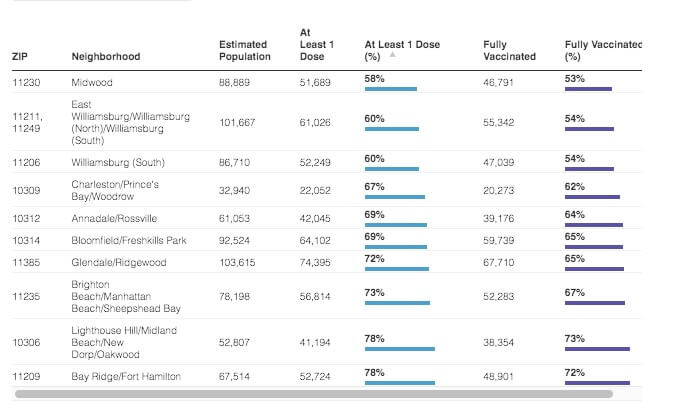
Overall, 18 communities across the city continue to have fully vaccinated rates below 60%. Borough Park, Brooklyn (11219) and Edgemere/Far Rockaway, Queens (11691) remain the only neighborhoods with fully vaccinated rates below 50%, at 46% and 48%, respectively.
Remarkably, however, the 7-day positivity rates and new infection totals for both communities were not among the top 10 in either category citywide last week. Between Nov. 24-30, Edgemere/Far Rockaway had 77 new cases and 5.09% positivity rate, while Borough Park had 65 new cases and a 1.09% positivity rate.
In all, COVID-19 trends citywide continue to increase, according to the New York City Health Department. The 7-day positivity rate was up to 2.81% as of Dec. 4. Hospitalizations are also increasing, with the citywide rate now up to 1 hospitalization for every 100,000 residents.
Fatalities from COVID-19, however, continue to remain low, thanks to vaccinations and better treatments now in use to help curtail severe infections.



